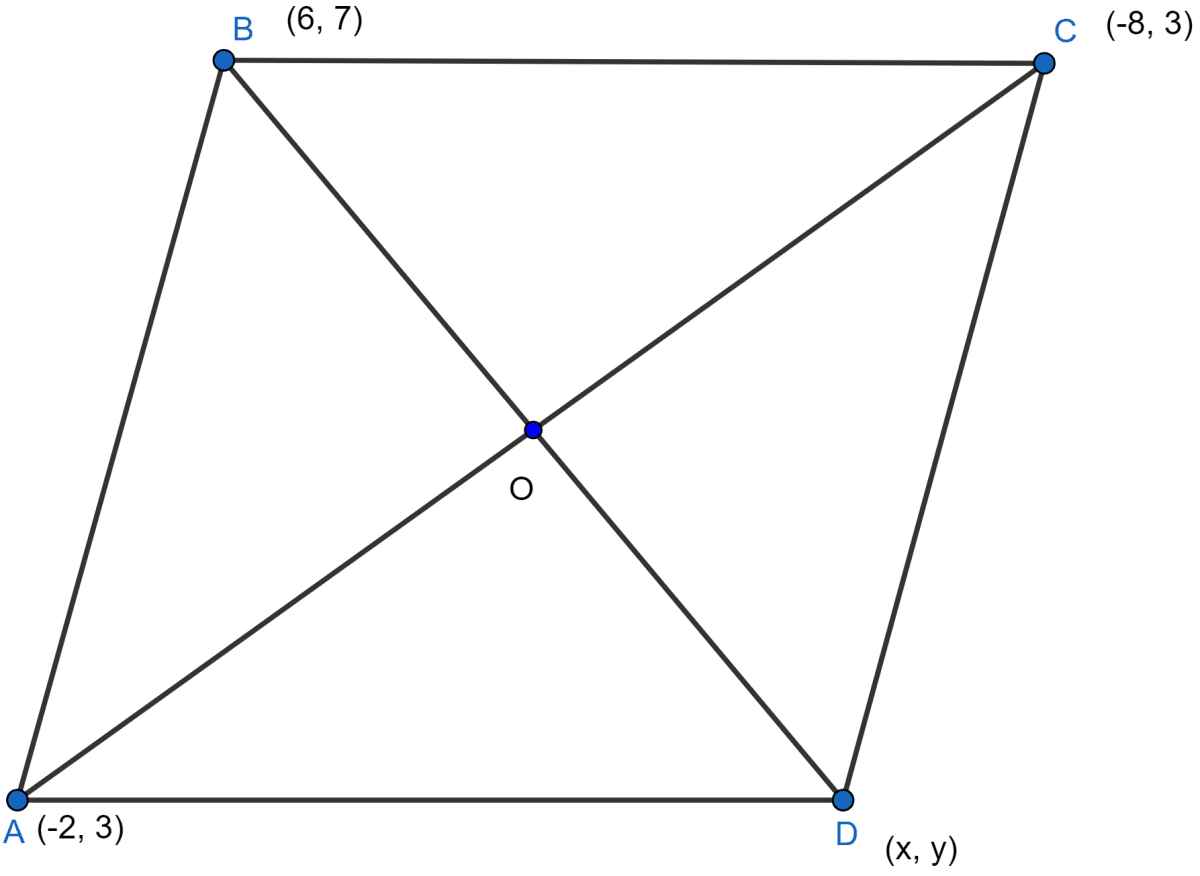Mathematics
The fourth vertex D of a parallelogram ABCD whose vertices are A(-2, 3), B(6, 7) and C(8, 3) is
(0, 1)
(0, -1)
(-1, 0)
(1, 0)
Section Formula
9 Likes
Answer
ABCD is a parallelogram whose three vertices are A(-2, 3), B(6, 7) and C(8, 3). Let coordinates of its fourth vertex D be (x, y).
The diagonals AC and BD bisect each other at O so O is the mid-point of AC as well as BD.

So, by mid-point formula the coordinates of O are,
Since, (3, 3) is the mid-point of BD so,
∴ Coordinates of D are (0, -1).
Hence, Option 2 is the correct option.
Answered By
5 Likes
Related Questions
The point which lies on the perpendicular bisector of the line segment joining the points A(-2, -5) and B(2, 5) is
(0, 0)
(0, 2)
(2, 0)
(-2, 0)
The coordinates of the point which is equidistant from the three vertices of △AOB (shown in the adjoining figure) are

(x, y)
(y, x)
The point which divides the line segment joining the points (7, -6) and (3, 4) in the ratio 1 : 2 internally lies in the
Ist quadrant
IInd quadrant
IIIrd quadrant
IVth quadrant
The centroid of the triangle whose vertices are (3, -7), (-8, 6) and (5, 10) is
(0, 9)
(0, 3)
(1, 3)
(3, 3)